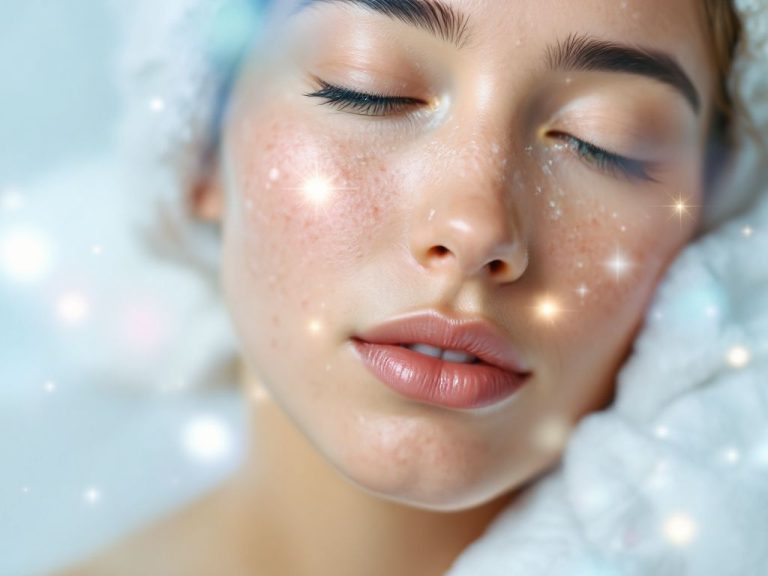Alright, let’s get real about something a lot of us have either faced, are suffering from, or might be worried about: acne. Not just any acne, though—let’s talk about the kind that loves to throw a party on your forehead, chin, or anywhere else it likes to hang out. Yep, you guessed it: inflammatory acne.
Now, inflammatory acne might sound fancy—or terrifying—but really, it’s just a sciencey way to talk about those painful, red bumps that don’t just ruin your selfies but also your mood. If you’re wondering why these little devils show up uninvited and how you might get rid of them, you’re in the right spot. Let’s dive into what exactly inflammatory acne is, the drama it causes, and how you, yes you, can tackle it head-on.
Table of Contents
ToggleWhat is Inflammatory Acne?
Picture this: you wake up in the morning, stroll over to the bathroom mirror, and suddenly— there they are—angry, swollen bumps looking back at you. Welcome to the world of inflammatory acne. Exactly what it sounds like, it’s acne that’s inflamed. More technically, these red, swollen pimples are your skin’s reaction to clogged pores that get all infected and terrible.
The Inflammation Process: The Basics
Now, don’t get too hung up on the science, but a little understanding can go a long way. Your body’s got this natural defense mechanism called inflammation. When something isn’t quite right, inflammation is kind of like your skin shrieking an SOS. It’s usually a mix of swelling, redness, heat, and sometimes pain. In the case of acne, common triggers include excess oil, dirt, and bacteria getting cozy inside your pores. Your body responds with inflammation as it tries to battle the unwanted guests.
Think of it as your skin staging an epic battle against invaders, and it’s throwing all its resources into the mix—from immune cells to good old bodily irritation. Sometimes, the resulting battleground resembles a whole campaign across your face, neck, or even back.
Types of Inflammatory Acne
Let’s break it down a bit. Not all inflammatory acne is created equal. Each type of blemish has its own vibe, and recognizing them can help you better tackle the problem.

Papules and Pustules
First up, there are papules and pustules. Fun names, right? Papules are those hard bumps that don’t have any obvious pus but you can feel them, trust me. Pustules, on the other hand, are a bit more… expressive. They’re the ones with a head filled with pus. Like a zit potion in progress, if you will. They’re bubbly and ready to burst.
Nodules and Cysts
Next in line, we have nodules and cysts. Nodules are a deeper, more severe version of papules—not exactly something you wanna mess with. They’re large, firm lumps lodged deep within your skin. And cysts? Oh, they might just steal the show. Picture nodules filled with pus. Painful, and when they finally disappear, they can leave behind scars like awkward reminders of past breakouts.
What Else Causes Inflammatory Acne?
Hormones: The Plot Thickens
And here’s where we introduce a major player in the acne saga: hormones. Particularly androgens, which can rev up your oil glands. That extra oil mixes in with dead skin cells and POOF!—something gets inflamed. Hormonal changes can be one part of that puzzle, especially during puberty, pregnancy, your menstrual cycle, or any significant hormonal shifts.
Lifestyle Factors That Don’t Help
Pressure points like tight clothing, helmets, or anything that puts pressure on your skin can exacerbate these conditions. Plus, stress, diet, and not catching enough zzz’s might just add a touch more spice to your inflammatory acne drama. But hey, we can work on those!
Treatment Approaches: Let’s Get Practical
Here’s the good news: while inflammatory acne may have set up shop like an uninvited roommate, there are ways to show it the door. With consistency and a bit of patience (and trust me, you’ll need some), your skin can get back on good terms with you.

Topical Treatments
- Benzoyl Peroxide: Give this a go as it targets the bacteria behind the breakout. It’s in a lot of acne treatments for a reason.
- Salicylic Acid: Works by unclogging pores, perfect for when those papules or pustules spring up.
- Retinoids: These can help prevent those pesky pores from clogging up in the first place.
Oral Medications
Getting a doctor involved is wise if things get turbulent on the skin front.
- Antibiotics: These can reduce bacteria and fight inflammation.
- Contraceptive Pills: Aimed at regulating hormones—consult with your doc on this one.
Natural Remedies
Ah, the natural path! Here’s what might float your boat:
- Tea Tree Oil: Dilute it first, but it can be an antibacterial alternative to benzoyl peroxide.
- Aloe Vera: Soothing and calming, not a standalone solution but a comforting buddy.
Tips for Managing Inflammatory Acne: Day in the Life

Build a Simple Routine
Incorporate a gentle cleanser, treatment, moisturizer, and sunscreen into your daily regimen.
Don’t Forget Consistency
While waiting for change might feel like watching paint dry, stick with your routine. Results take time, but they do come.
Pick Your Products Carefully
Say no to harsh scrubs or aggressive exfoliators. Your skin isn’t the enemy, focus on healing your skin instead.
Lifestyle Tweaks: Yes, They Matter
Manage stress—remember those chill evenings with lit candles and a good read? Get enough sleep, and consider if that third coffee is your best friend or foe!
Key Takeaways on Inflammatory Acne
To wrap things up, just remember: inflammatory acne is as human as things get. While it can be a huge deal right now, it doesn’t have to be forever. The situation might be a pain—but knowing why it happens is key. It’s a combination of oil, bacteria, inflammation, and, often, hormones. Manage it with a mix of approaches and adjusted habits, and you’re on route to calmer skins.
There’s no one-size-fits-all with treatment, but understanding your acne is the first, best step. Be patient and listen to your skin. Spoiler: happy skin definitely leads to happier days. It’s all part of taking constructive action with good skin management—fighting the fire with a steady hand and a laidback grin. Trust and care for the process, because, in the end, that’s what will make the biggest impact.
Frequently Asked Questions
What is inflammatory acne?
Inflammatory acne is a skin condition characterized by red, swollen, and sore bumps, including papules, pustules, nodules, and cysts. These blemishes are deep in the skin, contain pus, and are often painful. It occurs when pores or hair follicles become clogged with bacteria, dead skin cells, and excess oil, triggering an inflammatory response[1][2][3).
What are the common types of blemishes associated with inflammatory acne?
The common types of blemishes associated with inflammatory acne include papules (small, red, tender bumps), pustules (similar to papules but filled with pus), nodules (larger, more painful lumps deeper in the skin), and cysts (deep, painful, and pus-filled bumps). Cystic acne is a severe form of inflammatory acne that can lead to scarring[1][2][3).
How is inflammatory acne treated?
Treatment for inflammatory acne can include topical antibiotics or retinoids, oral antibiotics, and hormonal therapies. For severe cases, oral isotretinoin may be prescribed. Topical treatments such as benzoyl peroxide, salicylic acid, and azelaic acid can also be effective. It is important to avoid picking, squeezing, or popping the blemishes to prevent further inflammation and scarring[1][2][5).
Can inflammatory acne be prevented or managed at home?
While some inflammatory acne can be managed with over-the-counter skincare products, many cases require professional treatment. At-home care can include using gentle, non-comedogenic cleansers and moisturizers, avoiding picking or popping blemishes, and maintaining a consistent skincare regimen. Lifestyle changes such as a balanced diet and stress management can also help[1][2][3).
References- Inflammatory Acne: Symptoms, Types, Causes, Treatment. Cleveland Clinic.
- Understanding the Different Types of Acne and How to Treat Them. Keystone Dermatology Partners.
- The Definitive Guide to Acne: Types, Treatment, and Lifestyle Factors. Healthline.
- Acne clinical guideline. American Academy of Dermatology.








